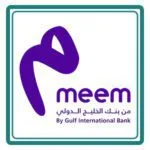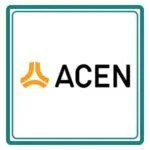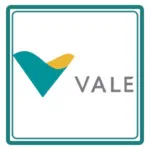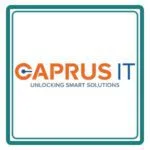ISO 20000-1 certification in Kenya
Get Free Consultation
PopularCert offers ISO 20000-1 Certification in Kenya to assist businesses in enhancing their IT service management. With our expertise, we help organizations streamline their IT processes, ensure they meet international standards, and boost customer satisfaction. This certification provides a clear framework to optimize IT services, reduce risks, and improve overall efficiency. By partnering with PopularCert, you’ll strengthen your reputation, ensure compliance with industry regulations, and gain a competitive advantage in the market. Let us guide you through the certification process to ensure you provide high-quality, reliable IT services.
What is ISO 20000-1?
ISO 20000-1 is a global standard for managing IT services, helping companies build, maintain, and improve their IT processes. It focuses on delivering high-quality services to meet user needs, handling incidents, managing relationships, and continuously improving service delivery. By following ISO 20000-1, businesses show they are committed to providing reliable, efficient IT services, ensuring customer satisfaction, and maintaining a structured approach to IT service management.
Why ISO 20000-1 Certification is Important in Kenya?
ISO 20000-1 Certification is crucial for businesses in Kenya as it helps them improve the quality and reliability of their IT services. It provides a structured approach to managing IT services effectively, reduces operational risks, and ensures compliance with industry standards. Achieving this certification strengthens a company’s reputation, builds customer trust, and ensures the organization remains competitive in the ever-evolving IT service market. Whether you’re an IT service provider or a business looking to enhance its IT services, ISO 20000-1 helps you stay ahead in the industry.
How to Get ISO 20000-1 Certification In Kenya?

Process to Get ISO 20000-1 Certification In Kenya
Consultation and Gap Analysis
PopularCert’s specialists assess your organization’s specific requirements and existing systems. We conduct a thorough gap analysis to pinpoint areas needing improvement to meet ISO standards.
Planning, Documentation, and Policy Development
Following the gap analysis, we create a customized implementation plan, define resource needs, and assist in developing necessary policies and documentation. These are seamlessly integrated into your current organizational framework.
Training and Awareness
Comprehensive training ensures your team understands ISO requirements and their responsibilities in maintaining the management system effectively.
Internal Audit and Management Review
We perform internal audits to evaluate system effectiveness and address any non-conformities. A management review aligns the system with your organization’s objectives and ISO standards.
External Certification Audit and Certification
After successfully completing the external audit, your organization will earn ISO certification. This reflects your commitment to excellence, strengthens credibility, and builds lasting trust with customers and stakeholders.
Benefits Of ISO 20000-1 Certification In Kenya
- Improved IT Service Quality: ISO 20000-1 helps companies deliver higher-quality IT services by following best practices and structured processes, ensuring better service delivery to clients and users.
- Enhanced Customer Satisfaction: With improved service quality, businesses can provide better experiences for customers, leading to higher satisfaction and loyalty.
- Operational Efficiency: The standard promotes more efficient management of IT services, reducing downtime, minimizing errors, and optimizing the use of resources.
- Compliance with Industry Standards: ISO 20000-1 ensures that your IT services align with international best practices, making it easier to comply with regulations and industry requirements.
- Competitive Advantage: Certification demonstrates to customers and partners that your company is committed to excellence in IT service management, giving you a competitive edge in the market.
- Risk Management: The certification helps identify and manage risks related to IT services, improving business continuity and reducing the chances of service disruptions.
- Continuous Improvement: ISO 20000-1 promotes a culture of continuous improvement, ensuring your IT services evolve and adapt to changing business needs and technology trends.
- Global Recognition: ISO 20000-1 is recognized worldwide, which can open doors for international business and partnerships, enhancing your company's reputation.
Types Of ISO Certification In Kenya
- ISO Certification In Kenya
- ISO 9001 Certification
- ISO 14001 Certification
- ISO 45001 Certification
- ISO 22000 Certification
- ISO 27001 Certification
- ISO 17025 Certification
- ISO 13485 Certification
- CE Mark Certification
- ISO 20000-1 Certification
- GMP Certification
- Halal Certification
- SOC-1 Certification
- SOC-2 Certification
Get Free Consultation
Our Clients


















Cost Of ISO 20000-1 Certification In Kenya
The cost of ISO 20000-1 certification in Kenya varies depending on factors such as the size of your organization, the complexity of your IT service management system, and the specific goals you need to achieve. PopularCert makes the process easier by offering tailored solutions to address your organization’s unique IT service management needs. Partnering with PopularCert ensures expert guidance, a seamless certification process, improved IT service performance, and a competitive advantage through adherence to internationally recognized ISO 20000-1 standards in Kenya. For more information and to apply for your ISO 20000-1 Certification In Kenya. We will guide you through the process and provide details on the cost involved to help you get started on your ISO 20000-1 Certification journey with PopularCert in Kenya.
Why Choose PopularCert For ISO 20000-1 Certification In Kenya?
Choose PopularCert for ISO 20000-1 Certification in Kenya because we provide expert support that fits your business needs. Our experienced team will guide you through the certification process, ensuring your IT service management operations meet global quality standards. With our help, you’ll improve service delivery, stay compliant with regulations, and build trust with your clients. We make the whole process simple, so your business can easily meet international standards and stand out in the IT service industry. Let PopularCert be your trusted partner on your journey to ISO 20000-1 Certification.
GET A FREE CONSULTATION NOW
FAQ
What is ISO 20000-1 certification?
ISO 20000-1 is a standard for IT service management. It helps organizations deliver effective IT services to meet customer needs and improve overall performance.
Why should my organization get ISO 20000-1 certified?
Getting certified can improve your IT service quality, increase customer satisfaction, and give you a competitive edge in the market. It also ensures compliance with international standards.
How long does the certification process take?
The process usually takes a few months, depending on your organization’s size and complexity. It involves setting up the IT service management system, conducting internal audits, and undergoing an external audit by a certification body.
What are the costs involved in getting ISO 20000-1 certified?
Costs vary based on your organization’s size and the complexity of your IT service management system. It includes fees for the certification body, training, and potential consultancy services.
How do we maintain our ISO 20000-1 certification?
To maintain certification, your organization needs to undergo regular surveillance audits and a re-certification audit every three years. Continuous improvement and adherence to the standard are key.
